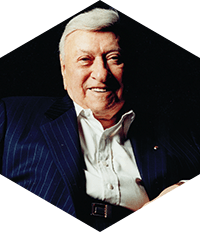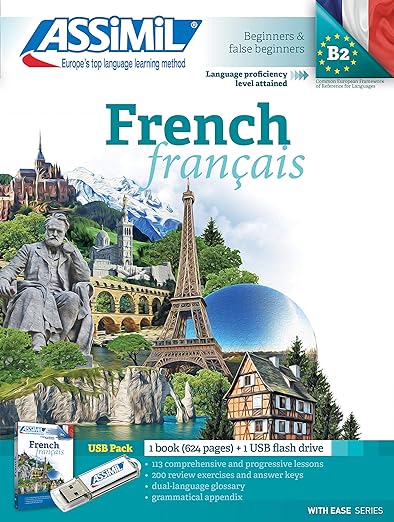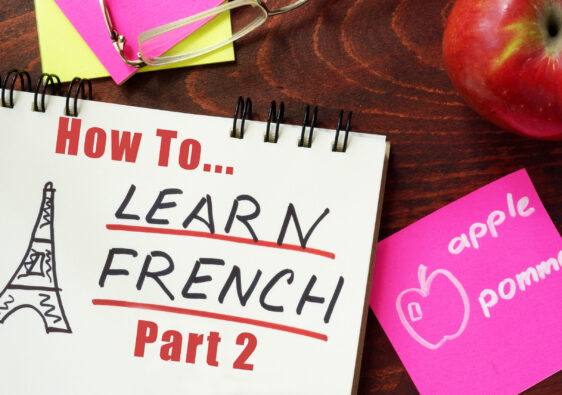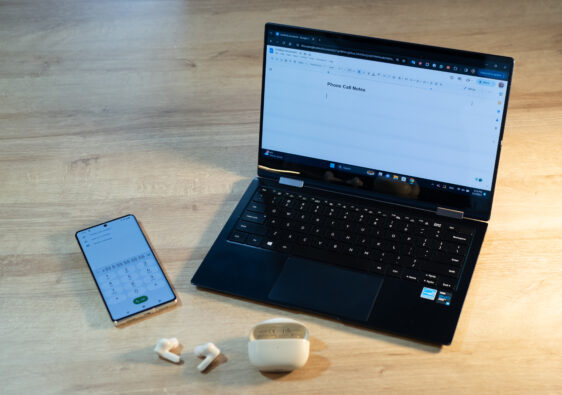This post contains affiliate links. If you buy something through them we may earn a commission.
A question I get asked all the time is how I learned French. It’s usually followed up by another question asking if I learned French in school or took any group classes. People are often shocked to hear that no, I didn’t go to school or take any classes to learn French, I taught myself.
Many people struggle with the idea that they can’t learn a foreign language on their own without a class or a tutor, but this isn’t true. In my opinion group classes can even be a waste of time since you’re only learning as fast as the slowest learner. Also, you’re not in charge of the content you’re learning. Your teacher or the textbook they’re using is in control. When you’re teaching yourself a language you can tailor what you’re learning to your own unique needs.
Also, another common misconception people have is, sadly, that they don’t have the “gift” or ability to learn a language. Again this isn’t true since we’ve all learned at least one language, our mother tongue, and that was while our brains were still developing and without textbooks or classes! So yes, I firmly believe we all can learn another language. It’s true some may be more adept at picking up the accent and can speak the target language like a native, while others struggle to eliminate their native accent from bleeding through into the foreign language, but that usually doesn’t cause a problem with understanding. And there are some people who just love learning languages and find pleasure in studying vocabulary and grammar (like me), but even if languages aren’t your “thing” you can still learn a foreign language if needed. My husband is a good example of this. Languages are not his “thing”, but he has learned French right alongside me.
In this post, I’ll be talking about two of the methods I used to learn French, which I always recommend to people who ask me how to learn a language. I always start with one or both of these two methods when I really want to learn a language. This isn’t what I would recommend if you’re traveling for a vacation abroad and just want to learn a few phrases to get around. Google Translate, Duolingo, and YouTube would be a better choice in that situation. But if you really want to go deep into a language this is what I do.
So without further ado…
Michel Thomas Method

I first discovered the Michel Thomas method when I was a teenager preparing for my first trip to France and it was a revelation. At the time I was also learning Russian (another story) and I remember wishing as I was going through the course that his method was available for Russian (it is now) because it made learning French so easy and fun.
It’s a very unique method. It’s an audio recording of a live class between Michel and two students who have no knowledge of the target language and you participate as the third student. Over the course of about eight hours in the foundation series (Foundation French) you progress from simple phrases like “it is comfortable” to more complicated sentences by the end like “What time are you going to get up tomorrow morning?”
After that, you progress to the advanced French course (Intermediate French), which is around five hours long. There he dives deep into all of the French verb tenses, including a brief overview of the much-feared subjunctive tense.
By the time you’re done, even if you’ve listened to each disc twice like I prefer to, you’ve got an excellent base in French grammar painlessly and in a matter of hours. You’ll be able to string together sentences in a way that is baffling even to yourself. The first time I traveled to France at 19, having just listened to the foundation course, I found myself being complemented by Parisians for my ability to ask questions and make requests.
What you’re not going to get from the course is a lot of useless vocabulary, use Google Translate instead for when you need to find a word. Instead, the method focuses on what Michel calls the “structure” of a language (aka the grammar). He does however teach several quick tricks to change thousands of words in English into French ones.
I find this approach is what works best for me. What’s the point of pouring over long lists of vocabulary, learning all of the names for fruits and vegetables for example, if you can’t then use them to form a sentence like “We would like to know where the pineapples are”?
Plus it’s just such a fun method. It becomes very addictive to start combining words into progressively more and more complex sentences. You find yourself yelling at the other students as they struggle to find the right word and feeling smug when you know the answer before they do. And Michel himself is a hoot, a slightly cantankerous old man with a heart of gold and a true love of languages and learning. Sadly he died a few years ago but his methods live on and have been applied to several new languages.
Assimil
The second method I used to learn French is Assimil. Although Assimil is popular among some polyglots, like Alexander Arguelles, overall most people I mention it to haven’t heard of it before. Perhaps that’s because it’s a French company and the majority of their courses are available in French. However, they still offer a very good selection of their courses in English and other languages.
Assimil is based on the concept of natural assimilation (hence the name Assimil). Every day you complete one lesson which will be a short dialog completely in your target language, with a translation on the opposite page and some footnotes at the bottom of the page. The accompanying audio recordings are completely in your target language, which is wonderful for training your ear and tongue to the sounds of your new language. At the end of the week, you have a recap lesson that summarizes the main points from the week.
Assimil is like being thrown into the deep end of the pool of language learning. From day 1 you’re immersed in real-life dialogues that get progressively faster and more complex in the weeks that follow. However you’re not without pool floaties with the translations and notes, but the idea is to not try to figure everything out all at once. Instead, you’re supposed to let your brain’s natural intuition work as you progress through the exercises.
After 50 lessons you begin the “second wave” where you go back to your first lesson, cover up the French side of the lesson, and translate the English page into French. Because at this point, you’re 50 lessons into the book, translating the first, very basic lesson isn’t hard. This is where you start actively creating the language. You continue through the book, doing one “passive” lesson and then going back and translating an earlier one.
One thing I love about Assimil is the high quality of the recordings and the fact that all of the vocabulary you learn is in the context of a dialog. To this day sometimes when I’m searching for a word or phrase in French, I’ll hear an Assimil dialog pop into my head with the word I need.
For French, I used two of their books. First, for beginners, Assimil’s French, and then to further advance, Using French, their course for intermediate learners. I recommend Using French if you really want to dig deep into verb tenses, including the literary ones, and deepen your knowledge of slang and French expressions.
One weak point can be Assimil’s instructions on how to use their courses. Each book seems to have a slightly different set of instructions, and some are rather vague. If you’re like me and prefer more structure, I’d recommend following these instructions which are based on the ones I used from Assimil’s Dutch course.
If you follow these recommendations and after several months of strenuous (but hopefully fun) mental effort I feel confident in saying you’ll have a very solid base in French (or whatever language you’re choosing to learn). Will you be fluent? Probably not yet, but you’ll be conversational and ready to progress to the next level. How do you progress to the next level? That’s for part two…




Thanks for sharing the Michel Thomas method. It really works!
I loved the Michel Thomas beginning courses. They gave me such a foundation to build on. I still remember how he ties a word in English to the word in French in a way you
will never forget!